Culture

Two of the world’s great libraries — the Vatican Library in Rome and the Bodleian Library at Oxford University — have scanned and loaded the first of 1.5 million pages of ancient Hebrew, Greek, and early Christian manuscripts online Tuesday.
The project brings rare and priceless religious and cultural collections to a global audience for the first time in history.
The website is the first step in a four-year project and it includes the Bodleian’s 1455 Gutenberg Bible — one of only 50 surviving copies.
The $3.3 million project is funded by the Polonsky Foundation, which aims to democratize access to information. Leonard S. Polonsky is chairman of Hansard Global PLC, an international financial services company.
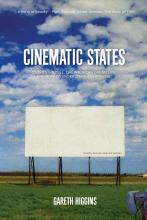
Lots of people like movies; Gareth Higgins loves movies. But the founding director of the Wild Goose Festival and long-time peace activist engages popular culture with a different eye than most of us. And he’s used that keen eye for deeper meaning to create his latest book.
I asked Gareth about his new book on American film, his peace work, and what it’s like considering American culture both as an insider and as a non-native. Here’s what he had to say.
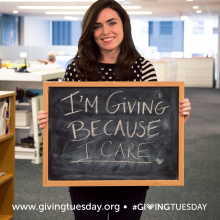
“Gray” Thursday, Black Friday, Small Business Saturday, Cyber Monday — and Giving Tuesday? For the second year in a row, nonprofits, businesses, and individuals are coming together to create a national day of giving on the Tuesday after Thanksgiving.
Why a national day of giving? Last year, New York’s 92nd Street Y, with the support of the United Nations Foundation, catalyzed the idea of adding a national day of giving to kick off the holiday giving season. The goal was to drive donations of time, money, or services to charities with the same enthusiasm that shoppers have on the shopping days surrounding Thanksgiving.
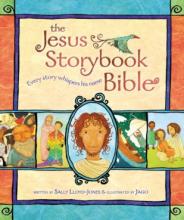
How do you get kids to read one of the world’s oldest books? Ask Sally Lloyd-Jones, whose The Jesus Storybook Bible recently passed the critical mark of one million copies sold.
The British ex-pat and now proud New Yorker has never married or had children of her own, yet aims to retell the Bible to something that comes alive for young people.
One of her editors told her once that there are two types of children’s books authors: the ones who are around children, and the ones who are children inside.
“It kind of freed me, because I think I know I’m that second one,” she said. “And I can still write from that place, because my childhood is so vivid.”

The Christian cross has become little more than a piece of jewelry worn around the necks of celebrities, said Archbishop of Canterbury Justin Welby.
In the foreword to a new book about Christianity, the head of the world’s 85 million Anglicans presents the symbol of Roman torture upon which Jesus died as “the moment of deepest encounter with radical change.”
And he regrets that after 2000 years, the cross has become trivialized.
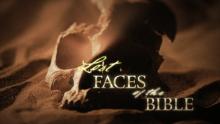
Many artistic renderings of biblical figures hang in churches and museums, but no one really knows what they and their contemporaries looked like.
Now, an international team of archeologists, forensic anthropologists, and facial reconstruction experts has tried to answer this question by recreating the faces of three adults and a newborn whose skeletal remains date back to biblical times.
A new four-part TV series, Lost Faces of the Bible (airing on the National Geographic Channel beginning Monday), follows the experts as they recreate long-gone faces utilizing the same state-of-the art technology used by police investigators.

Following the success of the History Channel's mini-series, The Bible, which appeared weekly last March, Hollywood seems to have renewed an avenue in which Biblical adaptations are allowed to enjoy a significant amount of limelight.
Two blockbuster titles are to set to be released in 2014: Paramount Picture's Noah and 21st Century Fox's Exodus. These two films both boast a star-studded cast as directors Darren Aronofsky and Ridley Scott hope to astonish audiences by combining stunning visualizations with two of the most popular accounts from the Old Testament, the Great Flood and the Exodus out of Egypt.
As a Christian and an avid movie-goer, I was thrilled to read that these two films were in production. However, once I saw the actors cast to play the leading roles in these two films, my excitement quickly turned to disdain. Not a single one of the leading roles in either movie was given to a person of Middle Eastern descent.
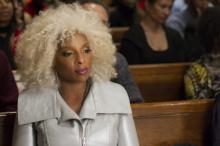
In her book “The Funny Thing Is …,” Ellen DeGeneres describes being invited to God’s house for wine and cheese. When the Almighty walks into the room, Degeneres describes God this way:
“I would say she was about 47, 48 years old, a beautiful, beautiful black woman. And we just immediately hugged.”
When I think about the guardian angels who I’ve been told surround me like spiritual body guards, I picture the Angel In Charge as looking and sounding a lot like the Grammy-winning singer Mary J. Blige.
How appropriate, then, that Blige portrays a character in the upcoming holiday film, Black Nativity, (based in part on the Langston Hughes play) who appears to be an angelic being with a huge platinum-blonde Afro, dressed head-to-toe in silver-colored leather.

As countless men grow mustaches this month to raise money and awareness for men's health issues, women and girls of all ages have put away their blush and mascara, seeking to remember they are beautifully made by God — even without the makeup.
"I think a lot of times we get so caught up in 'God made the world and the trees and the beauty and nature' and we see God's handiwork in the leaves changing in the fall, or we see his handiwork at the beach," said Becca Daniel, team leader at Rave Ministries.
"What we forget is we're told in all those other Scriptures that God made us, down to the last detail too."
Women and girls from 37 states and seven countries are participating in "No Makeup November," which is coordinated by Rave Ministries, a Christian girls ministry associated with the Churches of Christ.

It may be as close as a person can get to praying at the Church of the Holy Sepulchre, the Al-Aqsa Mosque and the Western Wall, without actually going there.
The newly released movie “Jerusalem,” filmed in 2D and 3D and playing on IMAX and other giant-screen theaters across the U.S. and the world, gives viewers grand, hallmark panoramas, at once awe-inspiring and intimate.
For years filmmakers had sought the rights to capture the city from the air, but never before had permission been granted, in part because the holy city is a no-fly zone.
Still, before filming began in 2010, producer Taran Davies came up with an extensive wish list of all the sites and rituals he wanted in the film, and presented it to advisers familiar with the spectrum of religious and secular officials who would have to approve.
“They all laughed and said forget about it,” Davies said. “They said, ‘It’s impossible and you’re not going to get half of what you’re looking for.’”
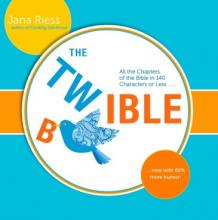
Nearly every home has at least one Bible, although few read it.
But 16 percent of Americans log on to Twitter every day. And that’s where author Jana Riess takes the word of God. A popular Mormon blogger at Religion News Service and author of “Flunking Sainthood,” Riess spent four years tweeting every book of the Old and New Testaments with pith and wit.
Now, the complete collection — each chapter condensed to 140 characters — is on sale as “The Twible,” (rhymes with Bible) with added cartoons and zippy summaries for each biblical book.
Her tweets mix theology with pop-culture inside jokes on sources as varied as ”Pride and Prejudice,” “The Lord of the Rings,” and digital acronyms such as LYAS (love you as a sister). To save on precious character count, God is simply “G.”

It's started.
I was following the Twitter feed for the conversation between Nadia Bolz-Weber and Amy Butler at Calvary Baptist Church in Washington, D.C. (#nadiaandamy) about the present realities and possible futures of Christianity in the United States, and it happened. I was happily dividing my cognitive attentions between Twitter and the television when it happened.
There was a Christmas ad.

There is no mistaking it: Shad Kabango's music is authentic and tenacious. With incredible humility, he speaks from his heart, with no fear of calling out the inconsistencies he sees in the world.
In the recent release of his 4th studio album, Flying Colours, the critically acclaimed Canadian emcee, better known as simply "Shad," hopes his music speaks for itself.
"It’s not easy to summarize or convey, I don’t think," Shad said of the theme of the album, in a recent interview with Sojourners. "Some sort of … feeling of hope, I guess, but hope within the complexity of real life and the challenges of real life."

DESPITE THE heart-felt and hand-written requests from thousands of American children in their Christmas letters, Santa has just announced he cannot bring them a new Congress this year. He tried, Santa wants us all to know; he tried hard. But he and his elves finally gave up when even the parts imported from China couldn’t make the thing work.
They first attempted to construct something with U.S.-made components, but it was almost as if the parts didn’t want to work together, like they had minds of their own. This surprised the elves since Congress—which has no apparent moving parts—hasn’t had a sentient thought in years.
However, as a small concession to all those disappointed little children, Santa this year will be honoring Christmas wishes that have traditionally been difficult to fulfill.
If Sally from Shreveport can’t get a workable electoral body in the nation’s capital, then she gets a pony. Simple as that. She asked for it last year—in fact she’s been asking for a long time—but this year she’ll get it. If her parents are not sure what to do with a 600-pound animal that requires constant attention and care, then maybe next time they’ll think twice before voting for a member of Congress who wears a three-cornered hat and proudly refuses to be treaded on, even though nobody’s trying.

The clouds, pregnant with rain. No light
but an inkling of light. If Advent is a time
of waiting, of joyful anticipation, why are we
so often troubled? Consider Mary, the unknown
future she holds. Or Amy, staying the day
with D—, expecting in January, alone and now
spotting with unexpected blood, baby not yet
ready. What was our life before children? Years
of memories now include the children—as if they
already were born, only we could not see them.
THE DAYS shorten and the scriptures get wild and woolly and Advent begins. Meanwhile, the secular holiday season builds in a frenzy of car commercials (does anyone really get a car for Christmas?), sale flyers, and often-forced cheer. Here are a few books—memoirs, spiritual writings, and art—that can be interesting, grounding, and inspiring companions for a complicated time of year. (They also are much easier to wrap than a car.)
Life stories
Good God, Lousy World, and Me: The Improbable Journey of a Human Rights Activist from Unbelief to Faith, by Holly Burkhalter. Convergent Books. Decades in political and human rights work convinced Holly Burkhalter that there couldn’t be a loving God—until she became a believer at age 52.
Hear Me, See Me: Incarcerated Women Write, edited by Marybeth Christie Redmond and Sarah W. Bartlett. Orbis. I was in prison, and you listened to my story. Moving works from inside a Vermont prison.
God on the Rocks: Distilling Religion, Savoring Faith, by Phil Madeira. Jericho Books. Nashville songwriter, producer, and musician Phil Madeira offers lyrical, wry observations on faith and life, from his evangelical roots to musing on a God who “knows she’s a mystery.”
I CAN’T WRITE a completely unbiased, academic review of this book: Nora Gallagher is a friend, and I know the medical world that she must still navigate, and how wonderful it is when you arrive at the Mayo Clinic. This book is for anyone who plans to die one day and wants to live daily with purpose and with a real God. Those who are or have been physically ill will find a kindred soul in Gallagher, while the healthy will wonder how they will handle the sad, sympathetic gazes from others in the pew when their names are placed on the prayer list.
When she is 60, the vision in one of Gallagher’s eyes begins to fail. She limits the use of her one good eye for fear of losing sight in it too. Not so bad, you might think—except that as a writer, seeing is key to paying for the medical tests and travel she will endure for two years.
Of course all good patients become writers in a way. At first you take random notes in scattered notepads. Finally you redefine yourself as a full-time patient whose life demands documentation of every symptom and test in a little black book that becomes your constant companion. You have now entered what Gallagher calls Oz, the land of illness.
For Gallagher, Oz is strange. Oz is blurry. She is lonely. She is a patient not a person. Oz has many disrespectful, condescending doctors working in machine-like hospital systems that allow 10 minutes for a consult; they must get to the next patient, not solve the mystery of her now-painful, debilitating state.
JAMES DOBSON and Kurt Bruner get three things right in their recent novels Fatherless and Childless: Euthanasia is wrong, married couples should make time to have hot sex, and stay-at-home moms should get some respect.
Pretty much everything else in the novels, the first two-thirds of a trilogy (book three, Godless, is due out in May 2014), is way off and internally incoherent. The plot starts in 2042, when an aging population and economic malaise have motivated the government to legalize euthanasia. Businessman Kevin Tolbert, recently elected to Congress, lectures his peers about the need to stop euthanasia and encourage parenthood in order to revive the economy. His wife Angie’s high school friend Julia Davidson, an allegedly progressive and feminist reporter, is assigned to write a story about him (lecture alert). Meanwhile Kevin and Angie struggle (with mercifully few lectures) with their third child’s diagnosis of Down syndrome. Subplots deal with a disabled teen and an elderly dementia victim who turn (or are pushed) to euthanasia.
Actual euthanasia, as disability-rights groups such as Not Dead Yet have documented, often turns on society defining “dignity” according to physical ability and health instead of the innate value of a human being. These novels, however, ask us to believe the main impetus for euthanasia would come from the drive to reduce the federal deficit, to deal with “swelling entitlement spending.”
What spending? The novels’ elderly and disabled characters are drawn or pushed toward euthanasia because of family financial troubles: There is no mention of any Social Security, Medicare, or Medicaid help going to any of them.
IN THE FOREWORD to Where Justice and Mercy Meet: Catholic Opposition to the Death Penalty, Sister Helen Prejean writes, “Welcome to the pages of this amazing book.” Her hospitable remark is not an exaggeration. I have written articles, taught classes, and spoken to church groups about capital punishment; in my judgment this book is the most accessible resource now available for engaging, informing, and perhaps even transforming how readers view the death penalty.
Where Justice and Mercy Meet was edited by death penalty activist Vicki Schieber, philosopher Trudy D. Conway, and theologian David Matzko McCarthy. The book is the product of two years of interdisciplinary courses, discussions, projects, and research—in sociology, political science, philosophy, economics, theater, ethics, and theology—at Mount Saint Mary’s University in Emmitsburg, Md. While the book has a Catholic focus, it should be useful to Christians of all stripes and others interested in addressing this issue.
The volume is divided into four parts. Through skillful section and chapter introductions and segues, the editors have done a fine job of creating an integrated whole. Relevant questions for discussion and action tips make the book perfect for study groups in churches and for the university classroom.
Part I, “The Death Penalty Today,” exposes the realities of the dominant current method of execution (lethal injection), surveys the history of the death penalty debate in the U.S., and suggests the significance of reading or hearing the stories of those affected by murder and capital punishment. Kurt Blaugher’s chapter, “Stirring Hearts and Minds,” meditates on the role of drama in allowing these stories to capture and broaden our imagination, to stimulate reflection, and to compel us to take action for social change. Indeed, stories—from real life as well as from film and literature—surface throughout the volume, with the most moving and memorable ones being the experiences and voices of those whose loved ones were murdered.
I RECENTLY saw a photograph of me taken on the day I was born: two weeks premature, swaddled, peaceful, vulnerable, beautiful—pure potential. I wanted to travel back in time to give the little guy some advice and protect him. Most of all I wanted him to experience the things I missed—those that only seem to come to our attention with the benefit of hindsight. I wanted him to take more risks for the good, not worry so much, be more open to receiving love, take more walks in fields and on beaches, and avoid a thousand mistakes. I wanted him to be different.
While wanting to undo history is probably a human universal, it can also be a kind of psychic violence, emerging from the notion that there is such a thing as the person we were “supposed” to be. Indulging this notion led to me projecting it onto three intriguing films. Short Term 12 is a lovely, painful story of recovery from childhood wounds. In Seconds, the newly restored melancholic science fiction tale of human engineering from 1966, Rock Hudson brilliantly imagines what happens when you convince yourself that superficiality is depth and exchange the life you have for cosmetic “transformation.”